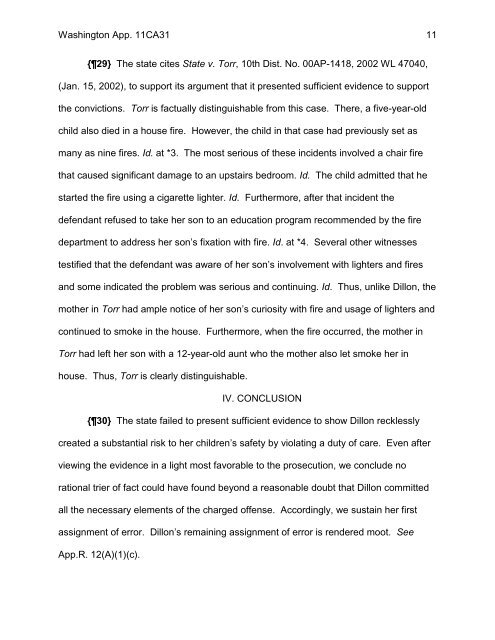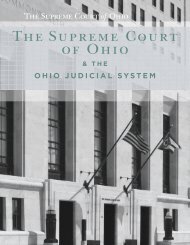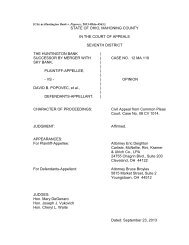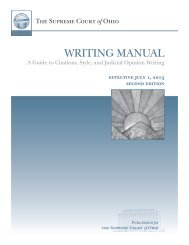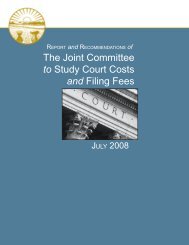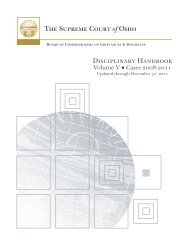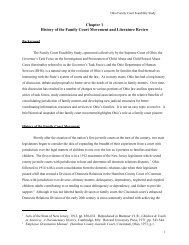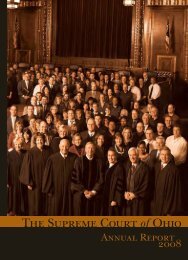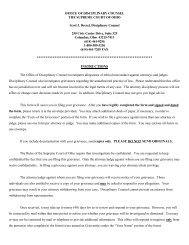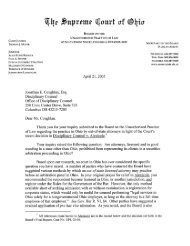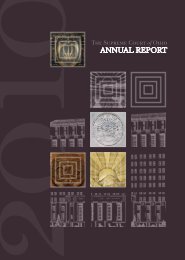State v. Dillon - Supreme Court - State of Ohio
State v. Dillon - Supreme Court - State of Ohio
State v. Dillon - Supreme Court - State of Ohio
You also want an ePaper? Increase the reach of your titles
YUMPU automatically turns print PDFs into web optimized ePapers that Google loves.
Washington App. 11CA31 11<br />
{29} The state cites <strong>State</strong> v. Torr, 10th Dist. No. 00AP-1418, 2002 WL 47040,<br />
(Jan. 15, 2002), to support its argument that it presented sufficient evidence to support<br />
the convictions. Torr is factually distinguishable from this case. There, a five-year-old<br />
child also died in a house fire. However, the child in that case had previously set as<br />
many as nine fires. Id. at *3. The most serious <strong>of</strong> these incidents involved a chair fire<br />
that caused significant damage to an upstairs bedroom. Id. The child admitted that he<br />
started the fire using a cigarette lighter. Id. Furthermore, after that incident the<br />
defendant refused to take her son to an education program recommended by the fire<br />
department to address her son’s fixation with fire. Id. at *4. Several other witnesses<br />
testified that the defendant was aware <strong>of</strong> her son’s involvement with lighters and fires<br />
and some indicated the problem was serious and continuing. Id. Thus, unlike <strong>Dillon</strong>, the<br />
mother in Torr had ample notice <strong>of</strong> her son’s curiosity with fire and usage <strong>of</strong> lighters and<br />
continued to smoke in the house. Furthermore, when the fire occurred, the mother in<br />
Torr had left her son with a 12-year-old aunt who the mother also let smoke her in<br />
house. Thus, Torr is clearly distinguishable.<br />
IV. CONCLUSION<br />
{30} The state failed to present sufficient evidence to show <strong>Dillon</strong> recklessly<br />
created a substantial risk to her children’s safety by violating a duty <strong>of</strong> care. Even after<br />
viewing the evidence in a light most favorable to the prosecution, we conclude no<br />
rational trier <strong>of</strong> fact could have found beyond a reasonable doubt that <strong>Dillon</strong> committed<br />
all the necessary elements <strong>of</strong> the charged <strong>of</strong>fense. Accordingly, we sustain her first<br />
assignment <strong>of</strong> error. <strong>Dillon</strong>’s remaining assignment <strong>of</strong> error is rendered moot. See<br />
App.R. 12(A)(1)(c).


